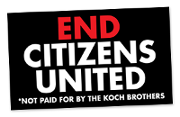Biblio
Filters: First Letter Of Last Name is P [Clear All Filters]
(1994). The pursuit of wow!: every person's guide to topsy-turvy times.
"Have you noticed?
Most good (neat, innovative, wild, woolly) 'stuff', large and small, happens in the boondocks, far, far, from corporate headquarters, corporate politics, and corporate toadying....
So how healthy is your fringe? How loony are its inhabitants?" (p. 301)
Most good (neat, innovative, wild, woolly) 'stuff', large and small, happens in the boondocks, far, far, from corporate headquarters, corporate politics, and corporate toadying....
So how healthy is your fringe? How loony are its inhabitants?" (p. 301)
(1996). Red Hat Linux Unleashed.
(2005). Revenge of the Right Brain.
"Any job that can be reduced to a set of rules is at risk. If a $500-a-month accountant in India doesn't swipe your accounting job, TurboTax will. Now that computers can emulate left-hemisphere skills, we'll have to rely ever more on our right hemispheres."
(2000). Special Edition: Using Samba.
(1995). Stop Paddling & Start Rocking the Boat: Business Lessons from the School of Hard Knocks.
"Visionaries have to come to work willing to be fired. That's the price you must pay. You've got to be willing to take chances, to speak up, to rattle cages, to challenge the basic premises, to suggest a better way of doing things." p. 222
(1996). Surviving Your Boss: How to Cope With Office Politics and Get on With Your Job.
"In any situation of change, conflict, or misunderstanding there is anger. Anger frequently masks fear. Fear in situations of conflict and change is very predictable. And with anger there is usually blame, for oneself and for others. Anger is one of the most destructive forces in the workplace today. It is ultimately a fatal emotion. Studies show that about 20 percent of us have hostility levels high enough to be dangerous—to our own health and to those around us. Hostility level is associated with increased smoking, drinking, eating, and weight gain. Hostility has long been a well-established contributor to coronary risk and heart disease, as well as myriad other illnesses.
It's likely you have experienced the relationship between anger, depression, resentment, and low self-esteem. You know about the aches and pains that come from tension. The fatigue and lack of joy that ensue as days are increasingly filled with the burden of frustration and suppressed rage." (p. 96)
It's likely you have experienced the relationship between anger, depression, resentment, and low self-esteem. You know about the aches and pains that come from tension. The fatigue and lack of joy that ensue as days are increasingly filled with the burden of frustration and suppressed rage." (p. 96)
(1993). Technopoly: The Surrender of Culture to Technology.
"In the work of Frederick Taylor we have, I believe, the first clear statement that society is best served when human beings are placed at the disposal of their techniques and technology, that human beings are, in a sense, worth less than their machinery." (p. 52)
(1987). Thriving on Chaos.
"It's absurd! We don't want for evidence that the average worker is capable of moving mountains—if only we'll ask him or her to do so, and construct a supportive environment. So why don't we do it?...
I am frustrated to the point of rage—my files bulge with letters about the power of involvement. Sometimes it's planned, and I'll talk about that. Sometimes it's inadvertent. But the result is always the same: Truly involved people can do anything!" (p. 286)
I am frustrated to the point of rage—my files bulge with letters about the power of involvement. Sometimes it's planned, and I'll talk about that. Sometimes it's inadvertent. But the result is always the same: Truly involved people can do anything!" (p. 286)
(1987). Thriving on Chaos: handbook for a management revolution.
"Today, there is an especially virulent form of corruption induced by overly rigid systems. This new corruption, in service to the 'system's imperative,' is non-responsiveness to constituent needs." (p. 606)
(1994). To Engineer is Human: The role of failure in successful design.
"There is a familiar image of the writer starting at a blank sheet of paper in his typewriter beside a wastebasket overflowing with crumpled false starts at his story. This image is true figuratively if not literally, and it represents the frustrations of the creative process in engineering as well as in art." (p. 75)
(1994). UNIX UNLEASHED W/CD/ROM.
- « first
- ‹ previous
- 1
- 2
- 3
(C)2014 CC-BY-NC 3.0, workcreatively.org











 ]
]